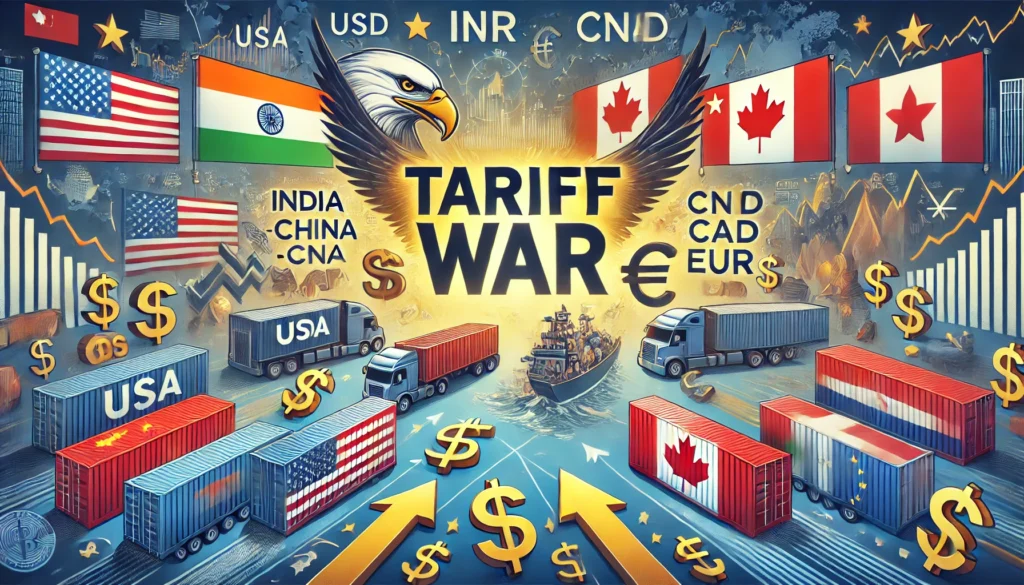U.S. President Donald Trump has highlighted India, along with the European Union and China, in discussions on global trade policies. He pointed out that India has some of the highest tariff rates globally.
Impact of U.S. Tariffs on India
A recent analysis by Goldman Sachs suggests that proposed U.S. tariffs could reduce India’s GDP growth by approximately 0.1 to 0.6 percentage points. The report explores two potential tariff application scenarios: country-level and product-level reciprocity.
The analysis indicates that India’s domestic economy is significantly linked to U.S. demand. Including indirect exports—Indian goods sent to other countries and then re-exported to the U.S.—this exposure could reach 4% of India’s GDP, potentially leading to a growth impact of 0.1 to 0.3 percentage points.
If the U.S. government increases tariffs to align with average tariff differentials between nations, the effective tariff on Indian imports could rise by 6.5 percentage points.
India’s Trade Relationship with the U.S.
- Over the past decade, India’s trade surplus with the U.S. has doubled, reaching $35 billion in FY24 (about 1% of India’s GDP).
- A major factor in this growth has been the rise in exports of electronic products, bolstered by fiscal incentives introduced through the Production-Linked Incentive (PLI) scheme in 2020.
Approaches to U.S. Tariff Implementation
Goldman Sachs outlines three possible ways the U.S. could implement reciprocal tariffs:
- Country-Level Reciprocity – This approach would involve increasing tariffs on all imports from a specific country by the difference in average tariff rates between that country and the U.S. In India’s case, this could lead to a 6.5 percentage point rise in U.S. tariffs on Indian goods.
- Product-Level Reciprocity – Tariffs would be adjusted at the product level, ensuring that U.S. import tariffs match those imposed by trade partners. This method could result in an 11.5 percentage point increase in U.S. tariff rates on Indian goods but would require more time and administrative effort to implement.
- Inclusion of Non-Tariff Barriers – In addition to tariffs, this method considers trade barriers like import licensing, subsidies, and administrative regulations. Due to the complexity of quantifying these barriers, the current analysis primarily focuses on tariff-related impacts.
India’s Exposure to U.S. Tariff Changes
India’s export exposure to the U.S. is relatively lower than that of many emerging economies, accounting for about 2% of GDP in 2023.
- Different tariff increases scenarios suggest that India’s GDP growth could decline by 0.1 to 0.3 percentage points.
- In a scenario where U.S. tariffs on Indian imports rise by 11.5 percentage points and price elasticity is estimated at -0.5, the GDP impact could be around -0.12 percentage points.
These findings indicate that while India would be affected by increased U.S. tariffs, its relatively low export dependence on the U.S. could mitigate the overall economic impact. President Trump tariff war will be impacting USA in most of the cases as it trying to impose tariff on most of the countries including EU, Canada, Mexico, India, China etc. However, this case my boost local manufacturing as well if implemented in planned manner. If the same is not implemented with robust plan, then that would negatively impact USA. This impact will be visible only after 5-10 years because of its macroeconomics nature. Let’s wait for the more development in this regards which will be visible in coming days.


